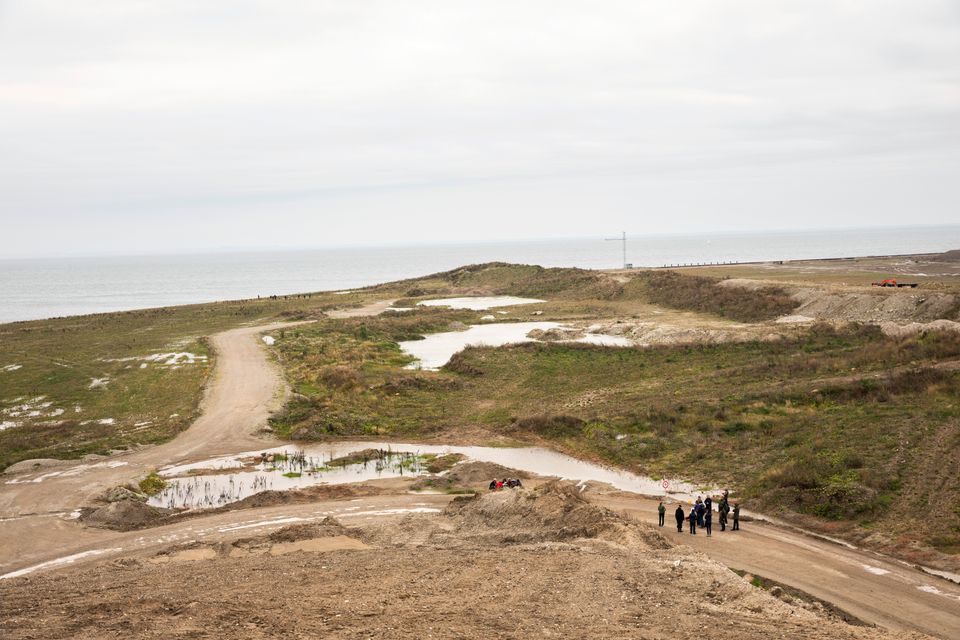Some 163 years before the Arab World had its spring, Europe was waking up to a future free of absolutism and more power for the people – a momentous series of events across multiple countries that is variously remembered today as the Spring of Nations, the People’s Spring, the Springtime of the Peoples, or the Year of Revolution.
But while 1848 was marked by serious insurrections in France, the states of Italy and Germany on their march to eventual unification, Hungary and Austria, Switzerland, Poland and several other states, Denmark’s revolution was a more sedate affair – thanks primarily to the new king’s willingness to concede.
Seventy years later
A year later, Frederik VII signed a new constitution that brought an end to the absolute monarchy, and on June 5, many will gather up and down Denmark to mark Grundlovsdag, the transition to a constitutional form of government, which unlike most countries has had a relatively smooth passage ever since.
Or has it? Things might have been very different had events in 1918 turned out differently – a near-revolution orchestrated by militant left-wingers, inspired by the Russian Revolution a year earlier, who were intent on seizing control
Ripe for a revolution
Although officially neutral, World War I was crippling for the nation’s economy. With the conflict drawing to a close and much of Europe in ruins, many Danish businesses went to the wall and unemployment was at an alarmingly high level.
However, wars can be good for business, and this was never truer than in the months leading up to the end of the conflict. Some astute Danes made a fortune importing goods that were in short supply, and gambling on the stock market meant that speculators could make or lose a fortune almost overnight.
As is often the case with newly-found wealth, the nouveau riche did not shy away from flaunting their wealth. While many in Copenhagen’s inner-city slum quarters did not have enough to eat, the privileged minority lived a life of luxury, dressing in the best clothes, driving new cars and eating in fancy restaurants. Their actions caused bitter resentment among the poverty-stricken majority.
Winter of discontent
The 1917 Russian Revolution had a profound effect on contemporary Danish politics. At the time the ideas of Karl Marx were taking hold throughout Europe, and Denmark was no exception with many of the more militant thinkers aware that the conditions that had helped spark the Russian Revolution now existed in Denmark.
One man influenced by new ideas concerning the distribution of wealth was the author Christian Christiansen. Along with some like-minded colleagues, Christiansen formed a loosely-knit left-wing opposition group, which was supported by many disenfranchised people who saw their situation as hopeless.
They felt they had nothing to lose should a communist government come to power, and to press home their demand for social change, the group planned a huge protest on 29 January 1918.
Did not predict a riot
The demonstration was scheduled to start in the socialist inner-city stronghold of Nørrebro and then move into the city centre, and it was rumoured that the mob planned to storm the city’s meat market in Vesterbro and ‘redistribute’ the food.
However, a more sinister scheme was planned. And at a given signal, a group of militants armed with wooden clubs broke off from the demo and headed to the Copenhagen Stock Exchange. the police were not prepared for this eventuality, having believed the earlier rumour and stationed many of their reinforcements in Vesterbro.
After arriving at the heart of the country’s financial district, protesters ran into the Stock Exchange building and started to beat terrified dealers around the head with wooden clubs.
When the police arrived they were met with a hail of rocks and stones from protesters outside, and they were unable to come to the aid of the stricken traders for several hours.
Battle only the beginning
After the police eventually managed to regain control, politicians called for stiff jail sentences to be handed out to those involved in the attack.
Many of those detained at the ‘Battle of the Borse’ soon became martyrs to the revolutionary cause.
As a protest against their continued imprisonment, another mass demonstration was planned, this time at Grønttorvet in the city centre on November 13. At the meeting, a general strike was threatened if the imprisoned men were not released. When the government refused to budge on the issue, the militants carried out their threat and a strike was called.
Parliament under threat
Although the main meeting had passed off relatively peacefully, later unruliness developed into a full-scale riot. Some activists had planned the uprising weeks beforehand and were hoping that the crowd would storm Parliament. Crowds rampaged through the streets of the capital, looting shops and attacking those they perceived as belonging to the bourgeoisie.
The battle continued for days, seriously injuring 30 police officers and an unknown number of demonstrators. However, riot squad officers were able to contain the mob and keep them away from the seat of government.
The call to down tools was not heeded across the board. After their failure to break through to Parliament, the mob turned their attention to those not adhering the call to strike.
One of the groups of workers who came under attack was the city´s tram drivers. Irate that they had not joined the strike, demonstrators vented their anger at them. Vehicles were occupied as drivers were forced to disembark, while demonstrators stood on vehicles waving the red flag and proclaiming that the revolution had begun.
Public unimpressed
However, unlike Russia, the hoped-for uprising did not receive wide support from the population at large. Many relativity prosperous citizens disagreed with the militants’ tactics, and the strikers gradually drifted back to work. Although unrest caused by discontent with the political system continued, riots on the scale of that seen around Grønttorvet were not repeated.
Historians still speculate as to what would have been the fate of the country – and indeed Europe – if the demonstrators had succeeded in their actions.
Getting involved
Who knows! Instead of Grundlovsdag on June 5, the country might have been celebrating Revolution Day on November 13. And June 5 would have still been a holiday as it is also the Whitsun Monday bank holiday. Everyone’s a winner!
Of particular interest to internationals on June 5 will be the English-language gathering at Revymuseet (Allégade 5, Frederiksberg; 12:00), an event hosted by Radikale.
Among the speakers are local party chairman Jens-Christian Poulsen, French ambassador François Zimeray, and Christian Friis Bach, the executive secretary and under-secretary-general of the United Nations Economic Commission for Europe.














